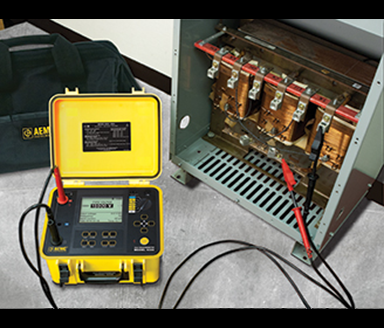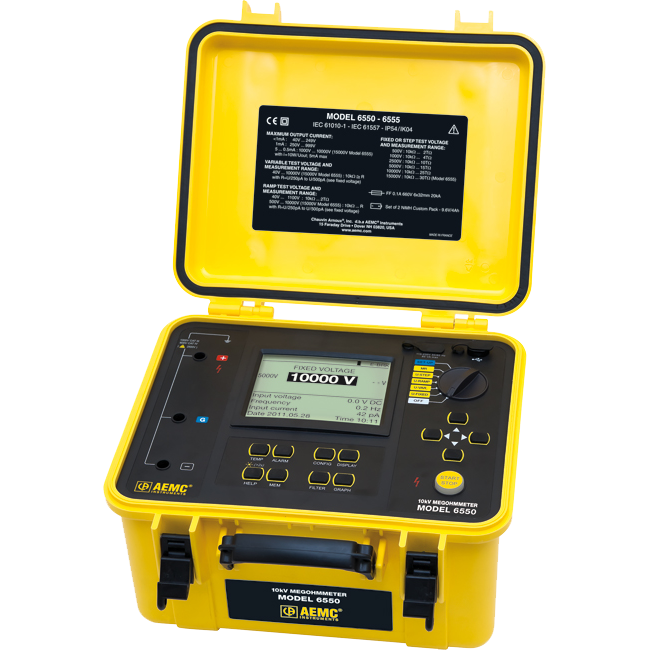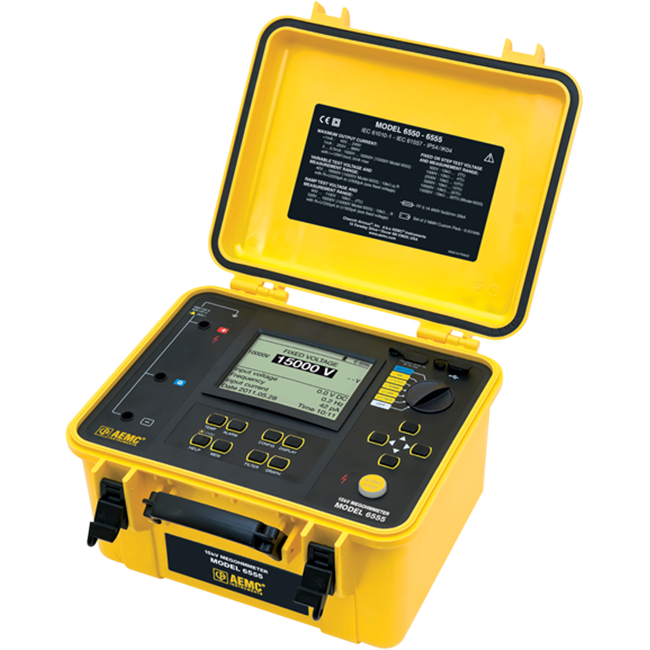(800) 343-1391 • (603) 749-6434
www.aemc.com
- Mega Menu
- Products
By Industry
Other Product Lines
- Learn
- Resources
- Support
- Customer Service
- Export
- Join our Mailing List
- Legal Notices
- Literature Request
- Policies
- Private Training
- Product End-of-Life Policy
- Repair and Calibration Services
- Returns
- Safety and Recall Notices
- Software/Firmware
- Technical Support
- Terms and Conditions
- Training Seminars
- Training Webinars
- Warranty Registration
- Where To Buy
- Store
- About Us
- Contact Us
- Products
- Cable Testers
- Clamp-On Meters
- Current Probes
- Data Loggers
- Decade Boxes
- Power Supplies/Generators
- Digital Multimeters
- Electrical Test Tools
- Environmental Testers
- Ground Resistance Testers
- GroundFlex® Field Kit
- Static Ground and Bond Test System Kit
- High Voltage Testers
- Megohmmeters - Insulation Testers
- Micro-Ohmmeters
- Multi-Function Installation Testers
- Oscilloscopes
- Power Analyzers / Energy Loggers
- Tachometers
- Thermal Imaging
- Digital Transformer Turns Ratiometers
- Accessories
- Learn
- Articles
- Resources
- Support
- Where to Buy
- Store
- Company
- Contact Us
ⓘ Due to recent tariff adjustments, product prices may be affected, and some surcharges may not yet be included in the prices shown.
We’re Sharing the Burden — Absorbing 50% of Tariff Costs to Help You Save. Learn More.
ⓘ Debido a los recientes ajustes en aranceles, los precios de los productos pueden verse afectados y algunos recargos podrán no estar incluidos en los precios mostrados en nuestro sitio web.
Para ayudarle a ahorrar, estamos asumiendo el 50% del costo de los aranceles. Más información en este enlace.
- Applications
- Megohmmeters
- Lead Compensation - Models 6550 & 6555
Lead Compensation - Models 6550 & 6555
All 6550 and 6555 Models with firmware version 2.1 or later allow you to select 0kΩ or 44kΩ lead compensation before using the meter. When using leads marked with a black section at one end indicating that the test lead resistance equals 44kΩ or marked with K22 at each end, users should enable 44kΩ lead compensation on their 6550/6555. By default, all new products are shipped with 44kΩ leads and 44kΩ lead compensation selected.
The Red lead in our set of 3 leads currently supplied with these meters includes 1 resistor of 22kΩ on each end to limit the peak short circuit current.
The Red lead is marked with a black section near one end of the lead that indicates the test lead resistance equals 44kΩ. Older leads were marked with K22 at each end to indicate the 44kΩ test lead resistance.
This lead type will create an additional 44kΩ of lead resistance that should be compensated for in the meter.
To enter the lead compensation selection menu, press the “Filter” button and hold it down while turning the switch from the OFF position to the SET-UP position.
Use the UP and DOWN arrow keys to highlight the 44kΩ or 0kΩ options. Use the RIGHT arrow key to select the highlighted entry. After a few seconds, the meter will reboot and the value is permanently saved until changed again.
If you are using a red lead with no K22 markings, the compensation selection should be set to 0kΩ. Older versions of our replacement leads and our optional Hippo clips require no compensation.
NOTE: When troubleshooting issues using the meters and checking lead continuity, these leads will not pass a straight through continuity test. They will not create a buzzing noise, or “buzz out,” and may appear to be open/broken when testing for continuity. When testing these leads, use the Ohms setting on your multimeter, and they will measure 44kΩ.
Video

















